Uncategorized
Exploring the Art and Craft of Punjab

Art and craft have been an integral part of Punjab’s rich culture and heritage. The vibrant and colorful art and craft of Punjab reflect the state’s deep-rooted traditional values, customs, and beliefs. The traditional art forms of Punjab have been passed down from generation, keeping the tradition alive.
Moreover, Punjab is known for its ancient history and tradition. This state has a rich collection of art and crafts that exhibit the state’s diverse culture, religious beliefs, customs, and lifestyle. The traditional art and craft of Punjab tell so much about the people and their culture.
This is also a reflection of the spirit and the history of the Punjab. So let’s dive deeper into the traditional art and craft of this vibrant state.
The History of Art and Craft of Punjab
The art and craft of Punjab have been an essential part of Punjab’s history for centuries. The state’s art and craft forms were inspired by the fusion of Hindu, Muslim, and Sikh empires. These empires hugely influenced the Art and craft of the state.
Moreover, the Mughal rule in Punjab introduced a new wave of Art in the state of Punjab. In that era, people use to express themselves through art and craft. This is the time when art and craft were promoted immensely.
Famous Forms of Art and Craft of Punjab
Punjab’s art and craft forms have a wide range of variety from embroidery to woodwork. So let us discuss some of the most popular art and craft of Punjab.
1. Phulkari Embroidery
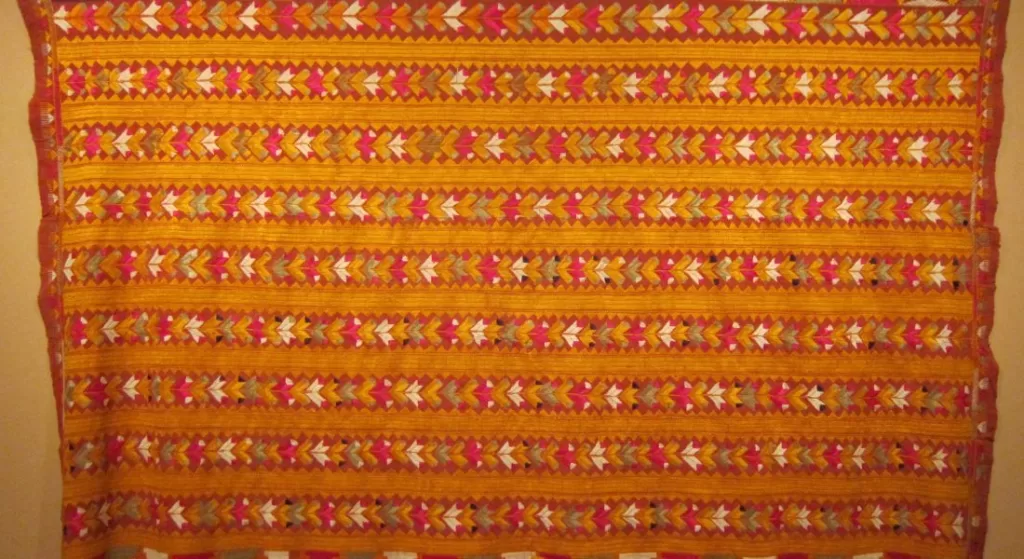
source: Wikimedia
The vibrant Phulkari embroidery is a Punjabi women’s traditional handicraft. If you have ever been to Punjab or any Punjabi wedding you must have seen women wearing these colorful dupattas. These are an integral part of every Punjabi ritual now. Moreover, these vibrant embroidery and pattern have blended really well with modern fashion. Phulkari embroidery is known for its intricate embroidery and vibrant colors.
2. Tilla Jutti Making
Tilla Jutti is a popular art in Punjab you might have not heard of it but you must have seen it on Juttis. Juttis are an important part of traditional Punjabi outfits. Tilla Jutti is known for its gold and silver embroidery. These Juttis have now become even more popular.
3. Punjabi Ghagra and Choli
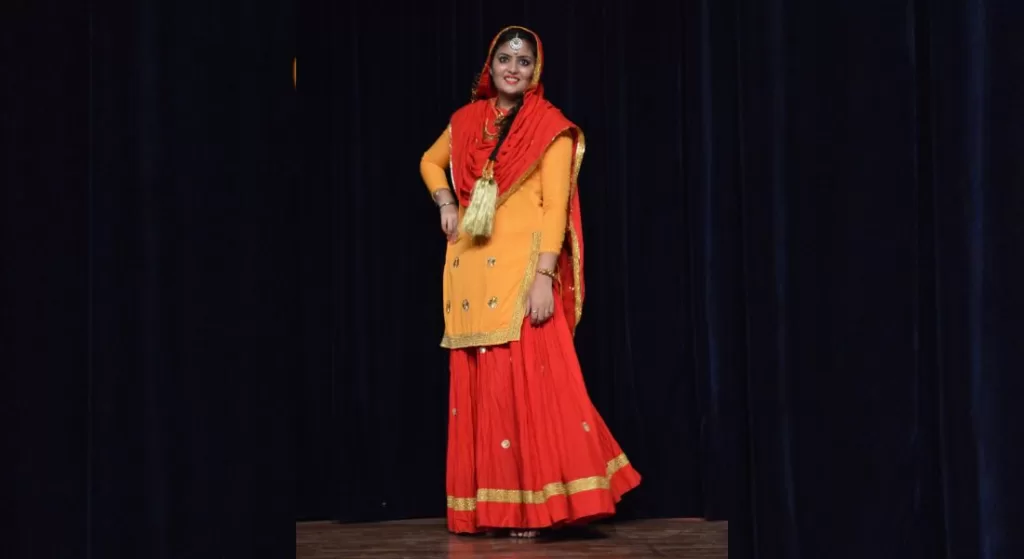
source: Wikimedia
Punjabi gharga and choli is a traditional dress worn by Punjabi women during weddings and festivals. This traditional dress is known for its vibrant color and intricate embroidery. This is an integral part of Punjabi tradition and culture.
4. Phulkari Bagh
Phulkari Bagh is another form of traditional Punjabi embroidery. However, this form of embroidery is often done on shawls, dupattas, and even suits as well. You might not know the details of this but you have surely seen women wearing these. The phulkari bagh represents the four seasons of the country.
5. Punjabi Jutti Embroidery
The Punjabi jutties are popular globally. Punjabi Jutti embroidery is a unique art form and is very popular in Punjab. Moreover, many popular brands have also included this traditional work in their collections as well. These juttis have intricate designs and vibrant patterns. Which is why they have blended very well with modern fashion.
6. Nanduti Work
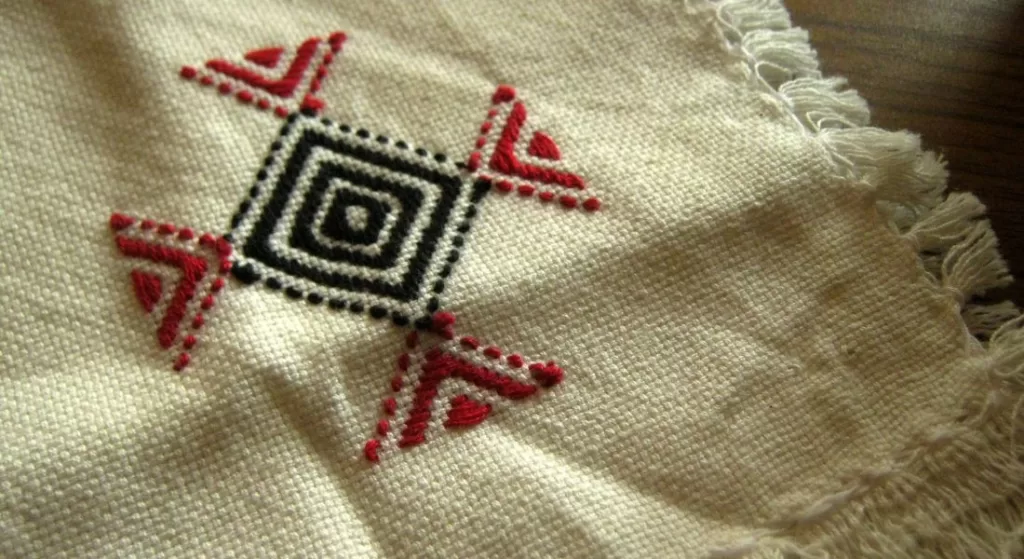
source: Wikimedia
Nanduti work is a type of embroidery that is very famous in Punjab. Moreover, this is still used to enhance the work on any garment. This is a very popular and delicate work of embroidery that is done with the help of needle and thread. The designs are all symmetrical and vibrant. Various colorful threads are used to create these beautiful designs and patterns.
7. Punjab’s Metalwork
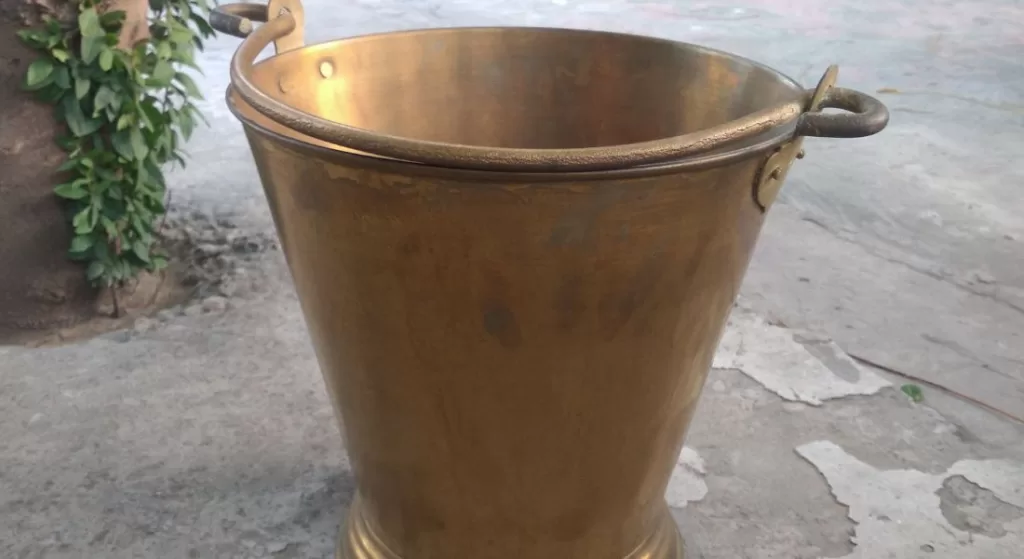
source: Wikimedia
Punjab’s metalwork is famous for its brass and copper sheet work. These are very hugely in demand and are appreciated even now. The artisans make various household items such as lamps, plates, and other decorative items.
The Bottom Line
The art and craft of Punjab is a unique and rare form of expression. This is a representation of the rich heritage and history of the state. The traditional art forms and crafts are still kept alive by the artisans of Punjab and they have passed it down from generation to generation. The best part is that traditional art has blended beautifully with the modern world.
Punjab’s art and craft forms tell so much about the people and the culture of Punjab. There is a wide variety of art and craft in Punjab. Lastly, dont forget to cherish the local and traditional artform of Punjab. Support authentic art and artisans.
Uncategorized
A New Hope for Spine Patients: Dr. Aditya’s Groundbreaking Surgery in Tricity
Jammu, November 16: A big step for spine care has taken place in Tricity.

Dr. Aditya’s Groundbreaking Surgery in Tricity marks a major step in modern spine care. Dr. Aditya Gupta from Paras Hospital, Panchkula, performed the region’s first awake endoscopic spine surgery. The patient stayed awake under local anaesthesia, which made the procedure safer for someone with heart issues. The technique used a very small 6-8 mm cut, making it far less invasive than traditional spine surgery. Because the patient breathed on his own, the surgery avoided the risks linked to general anaesthesia. Dr. Aditya used a transforaminal endoscopic approach, which helped him target pain-causing spots with accuracy and avoid nerve damage.
Moreover, Dr. Aditya said this keyhole method speeds up recovery. Blood loss stays extremely low. Many patients can walk within an hour of the surgery. This gives confidence to people who fear long recovery periods. This success also shows how fast medical care is improving in the Tricity region, including Chandigarh and Mohali.
Furthermore, Dr. Aditya’s strong education adds to his skill. He completed his MBBS and MS in Orthopaedics in Jammu. Later, he trained at PGI Chandigarh and ranked first in the All India Fellowship Examination in Spine Surgery. He also trained further at leading centers in Ahmedabad and New Delhi. His father, Dr. Rajesh Gupta, heads Orthopaedics at ASCOMS & Hospital in Jammu, which greatly influenced his career path.
Additionally, the Tricity region is becoming known for advanced healthcare. New methods like awake endoscopic spine surgery show how hospitals focus on safe and effective treatments. This helps patients who cannot go through major surgeries due to conditions like diabetes, heart disease, or breathing problems.
As medical technology grows, doctors aim to reduce pain and avoid complications. Awake endoscopic spine surgery supports this goal. It lowers surgical stress, reduces hospital costs, and helps patients return to normal life faster.
In addition, the success of this operation motivates more doctors in the region to learn similar techniques. This will support many more patients who need spine care but fear high-risk procedures. It also boosts the Tricity area’s role as a developing medical hub.
In conclusion, Dr. Aditya’s Groundbreaking Surgery in Tricity stands as a major milestone in spine care. His work brings safer, quicker, and more advanced options to patients and strengthens the future of healthcare in the region.
Uncategorized
Severe Negligence Alleged at Maharana Bhupal Hospital as Family’s Pleas Go Ignored
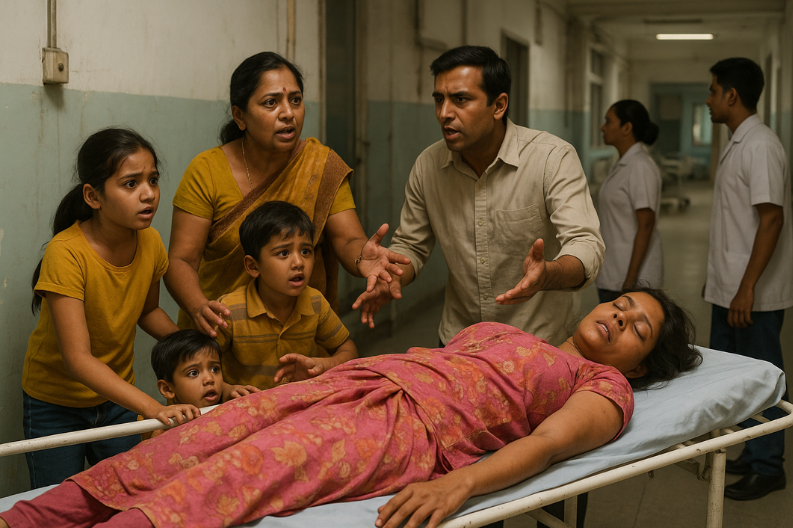
Udaipur: A serious incident where severe negligence alleged at Maharana Bhupal Hospital. A family alleges that hospital staff ignored their repeated calls for help while a mother in critical condition struggled without support. Her two young children and relatives searched desperately for anyone who could assist, but no staff member stepped forward.
Eyewitnesses say the family asked for immediate medical attention several times. Each request went unanswered. As minutes passed, panic grew. What began as a medical emergency soon turned into a moment of deep shock for everyone present.
The family’s account questions the hospital’s emergency response system and the responsibility of on-duty staff. They believe the delay could have changed the course of their lives. “One moment of negligence can change an entire family’s future,” a relative said. They argue that a life-saving institution cannot afford such lapses, especially during critical moments.
Hospital officials have not released a statement so far. The incident has sparked public concern, and many citizens are demanding a quick inquiry and stricter enforcement of patient-care standards.
At its core, the allegation is alarming. A hospital built to protect lives may have ignored a family’s desperate pleas. If the account proves accurate, the problem goes beyond poor care. It reflects a troubling system failure.
For the family, even a short delay carried heavy consequences. For the hospital, this moment calls for transparency and reform. In the days ahead, key questions will shape the investigation: Did staff truly fail to respond? Did they misjudge the urgency? And is this an isolated failure or part of a deeper pattern?
Uncategorized
PM Modi Meets the Victim of the Delhi Blast: A Detailed and Clear Report
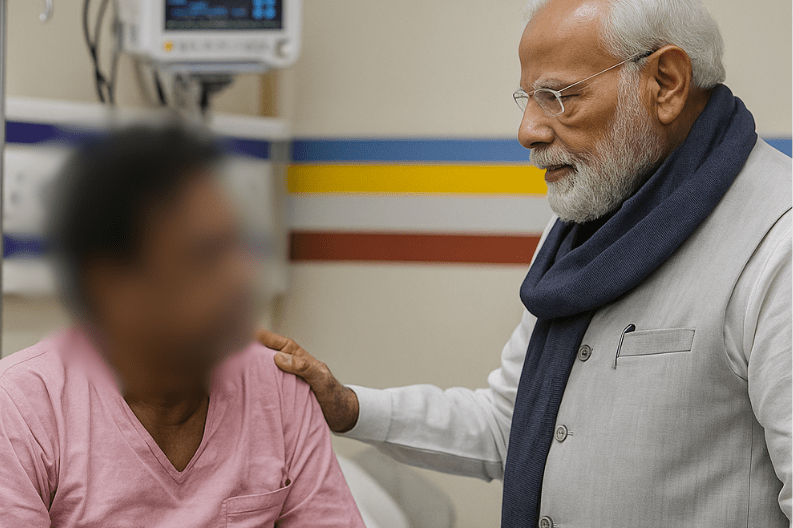
Prime Minister Narendra Modi returned from Bhutan, and PM Modi meets the victim of the Delhi blast, soon after he landed in Delhi. He went straight to Lok Nayak Jai Prakash (LNJP) Hospital on Wednesday. There, he met every injured person and asked about their health. He also spoke with doctors about the treatment. PM Modi told the hospital staff that the government would act fast to support the victims. Security outside the hospital remained very tight due to the serious situation. The blast near the Red Fort on Monday evening killed nine people and injured more than twenty. It happened during rush hour, and many people were scared.
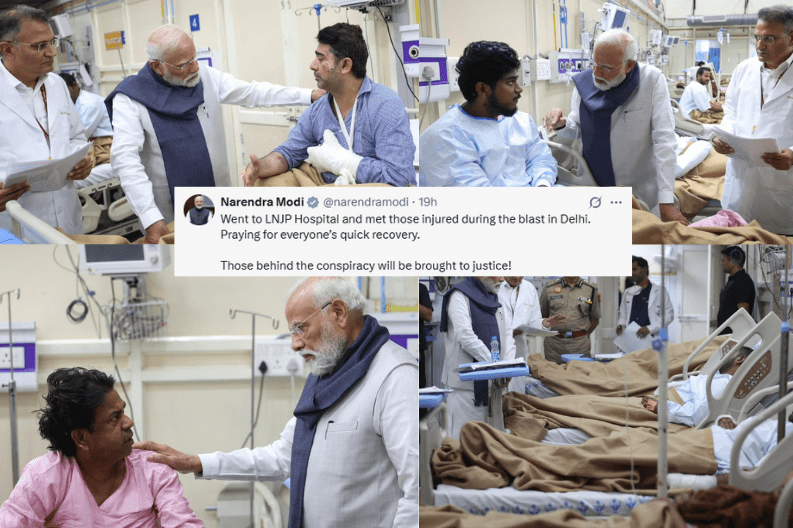
Investigators said the explosion came from a slow-moving Hyundai i20 filled with explosives. The blast damaged several vehicles nearby. Soon after the incident, security agencies arrested eight suspects. This group included three doctors. Police also found nearly 2,900 kg of explosive material linked to Jaish-e-Mohammed and Ansar Ghazwat-ul-Hind. Officers found more ammonium nitrate at a private university in Faridabad. Officials believe the suspects planned to attack during Diwali and later on Republic Day, but they failed to carry out their plans.
Home Minister Amit Shah held an urgent security meeting after the blast. He asked all security teams to work closely and check every detail. The National Investigation Agency (NIA) now leads the case. Security alerts have increased across Delhi, Uttar Pradesh, Bihar, and Mumbai. Police are checking more people at metro stations, markets, bus stops, and religious places. Investigators are also trying to confirm if the blast was a suicide attack because the driver, believed to be Dr. Umar Nabi, died at the scene.
During his Bhutan visit, PM Modi spoke about the tragedy. He said he felt deep sorrow for the victims. He promised that the people behind the blast would face the strictest punishment. After he returned, he posted on X and prayed for the fast recovery of all the injured. Experts are studying the explosive materials now. Early reports show that the bomb was extremely powerful, even stronger than ammonium nitrate bombs used before.
As the investigation continues, the government is trying to assure citizens that the city is safe. More police teams now guard crowded places to prevent further danger. PM Modi said such attacks will not break India’s unity. He ended the day by promising that everyone involved in the planning or execution of the blast will face justice. With his strong message and his hospital visit, PM Modi meets the victim of the Delhi blast, which stands as a clear sign that the government will support the victims and protect the country.
-

 City Guide3 years ago
City Guide3 years ago3B2 Mohali Market Shops: Discover 44 Hidden Gems
-

 Entertainment2 years ago
Entertainment2 years agoTop 15 Punjabi Models – Male and Female List
-

 Entertainment2 years ago
Entertainment2 years agoTop 11 Punjabi Comedians of All Time
-

 Jobs4 years ago
Jobs4 years agoTop 20 IT Companies in Mohali
-

 Food4 years ago
Food4 years ago11 Best Restaurants in Mohali You Must Visit
-

 Property2 years ago
Property2 years agoWho Lives In Homeland Mohali: Punjabi Celebrities, Business People…
-

 Food3 years ago
Food3 years agoTop 15 Cafes in Mohali you must visit
-

 Education2 years ago
Education2 years ago10 Famous Punjabi Writers With A Great Impact On The Literary World
